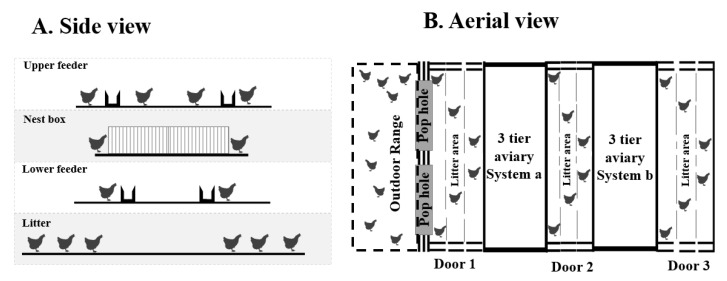Figure 2.
Pictorial diagram of locations that hens were randomly selected from within the commercial 3-tiered aviary system. (A) represents a side view and (B) represents an aerial view of the aviary system showing the floor area with litter, lower feeder tier, nest box tier and the upper feeder tier as well as the outdoor range. Hens could freely access any area according to their choice, except when the pop holes to the range were closed during 8 pm until 4 am. For the random hen selection for behavior tests at 74 weeks of age, each location was allocated a random number and the order of locations were determined using a random sequence generator (https://www.random.org/sequences/) corresponding to the allocated location number. Thus, the randomly created sequence was used to select hens from all sections of the aviary. The pen had three entry doors (B. aerial view) which were entered sequentially (Door 1 first, Door 2 s, Door 3 third, Door 1 fourth, and so on) to collect two hens per visit according to the numbered sequence. This sequence was followed until the targeted number of hens was tested.

